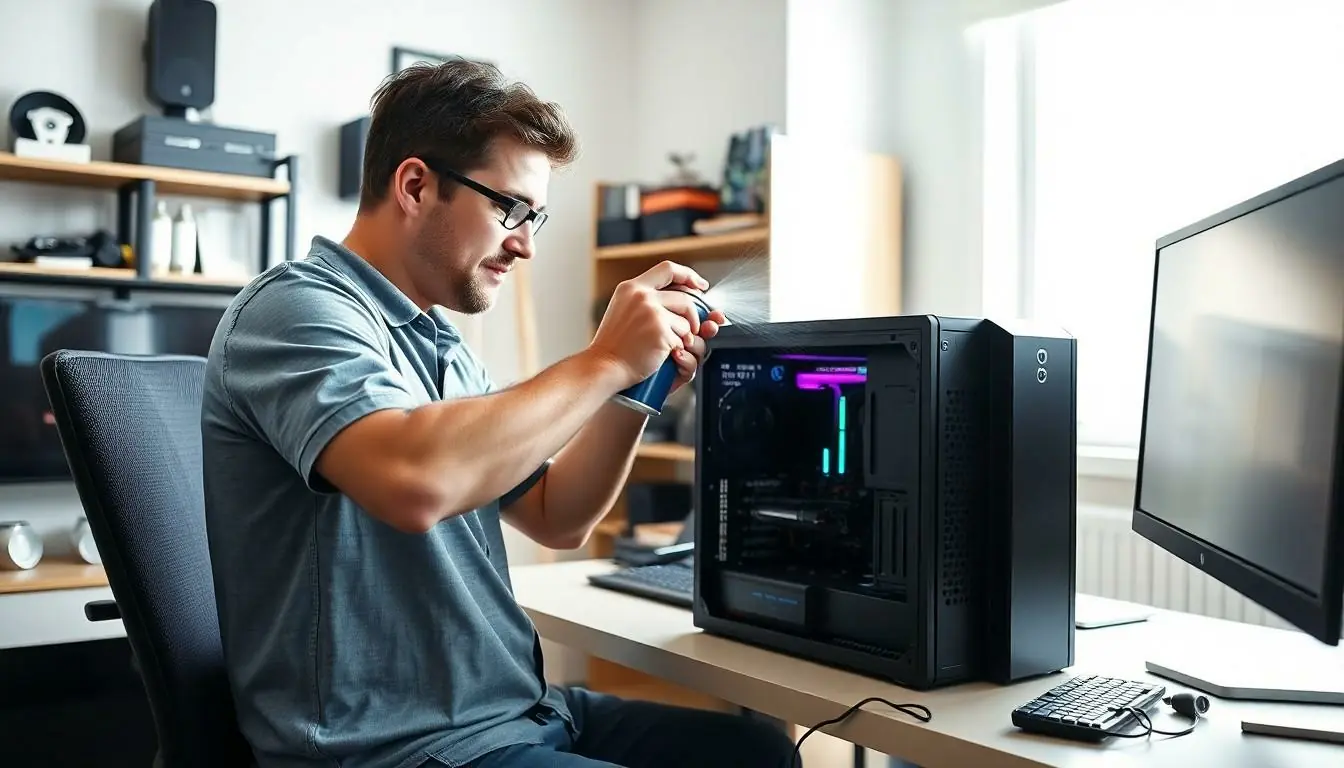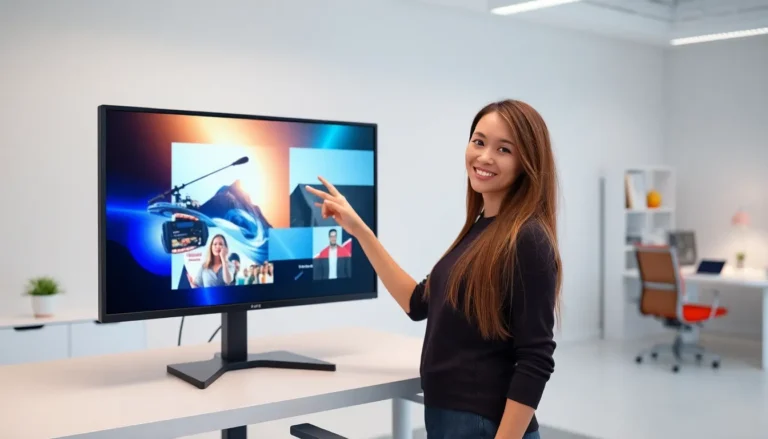Table of Contents
ToggleIn a world where computers are as essential as morning coffee, keeping that hardware in tip-top shape is crucial. Imagine your computer as a high-maintenance pet; it needs regular check-ups and a little TLC to avoid a meltdown—literally. Whether it’s dust bunnies lurking in the fans or cables tangled like spaghetti at a family dinner, neglecting maintenance can lead to performance hiccups and costly repairs.
Importance of Maintaining Computer Hardware
Regular maintenance enhances the performance and lifespan of computer hardware. Dust accumulation can lead to overheating, causing components to fail. Clearing dust from fans and heat sinks prevents this risk. Organizing cables not only improves airflow but also makes hardware access easier.
Effective maintenance reduces the likelihood of costly repairs. Preventive care addresses potential issues before they escalate. Regular software updates complement hardware maintenance, ensuring compatibility and security. Remaining vigilant can significantly extend the longevity of devices.
Routine inspections of internal components support optimal function. Checking for loose connections, frayed cables, or signs of wear enhances reliability. It’s wise to run diagnostic tools to identify any emerging problems early. These proactive steps can save time and money down the line.
Performing backups regularly also safeguards against data loss from hardware failures. In case of critical failures, backups ensure data retrieval remains seamless. Regularly testing hardware functionality identifies performance bottlenecks. Identifying and resolving these issues contributes to smoother operation.
Investing time in maintenance ultimately fosters a better computing experience. Enhanced performance motivates users to perform tasks more efficiently. It also increases productivity across various applications and environments. Prioritizing maintenance strategies cultivates a reliable and efficient hardware ecosystem.
Regular Cleaning Practices

Regular cleaning practices are crucial for maintaining computer hardware functionality and longevity. Routine tasks help prevent performance issues that arise from dust accumulation and ensure that internal components operate efficiently.
Dust Removal Techniques
Dust removal techniques include using compressed air to clear out dust from fans, vents, and internal components. Vacuuming around the computer setup helps minimize dust buildup in the surrounding area. Microfiber cloths can wipe surfaces without leaving residue. Users must avoid using liquid cleaners directly on components to prevent damage. Cleaning peripherals, like keyboards and mice, also boosts hygiene and performance. Ensure that these practices occur every few months for optimal results.
Importance of Moisture Control
Moisture control remains vital in a computer’s environment. High humidity can lead to corrosion of components and shorten their lifespan. Utilizing silica gel packets or a dehumidifier in the vicinity can help absorb excess moisture. Regularly checking for signs of condensation around hardware also prevents potential damage. Maintaining a temperature-controlled environment contributes to both moisture and dust reduction, creating ideal conditions for hardware performance. Regular attention to moisture levels enhances reliability and functionality.
Routine Software Updates
Routine software updates serve as crucial components in maintaining computer hardware. Regular updates improve system security and enhance overall performance by fixing known vulnerabilities and bugs.
Benefits of Keeping Software Up to Date
Staying current with software updates offers multiple advantages. Improved security against emerging threats plays a significant role in protecting system data. Enhanced performance leads to smoother operations by optimizing the software. Compatibility with new applications ensures that users can take advantage of the latest features. Increased reliability of existing software reduces system crashes and disruptions. Effective resource management helps free up memory and processing power, contributing to an overall better user experience.
How Updates Relate to Hardware Maintenance
Software updates significantly intersect with hardware maintenance. Compatibility requirements often change, and keeping software up to date prevents potential conflicts with hardware. System performance hinges on updated drivers, which enables the hardware to function effectively. Enhanced communication between the operating system and hardware components reduces risks of overheating or malfunctions due to outdated software. Regular updates ensure optimal resource utilization, resulting in longer hardware lifespan and improved user satisfaction. Users experience fewer issues, leading to lower overall maintenance and repair costs.
Hardware Inspections and Diagnostics
Regular inspections and diagnostics significantly contribute to maintaining computer hardware. These practices ensure optimal performance and longevity.
Identifying Potential Issues
Potential issues arise when components show signs of wear or malfunction. Checking for overheating can prevent damage to critical parts. Creating a checklist for visual inspections helps identify loose connections or unusual wear. Noticing strange noises might indicate a failing hard drive or fan. Running preliminary tests on components not only catches problems early but also helps in planning preventive maintenance.
Tools for Diagnostics
Numerous tools streamline the diagnostic process and offer precise insights. Software such as Speccy provides detailed system information and highlights potential trouble spots. Utilizing built-in diagnostic utilities offers simple ways to check hardware functionality. Tools like HWMonitor track temperature and voltage levels, ensuring safe operating conditions. Employing benchmarking software helps users assess system performance against expected standards, pinpointing areas needing attention.
Maintaining computer hardware is essential for optimal performance and longevity. Regular cleaning and inspections help prevent issues that could lead to costly repairs. By keeping components dust-free and ensuring proper airflow, users can avoid overheating and enhance system reliability.
Routine software updates not only bolster security but also improve compatibility and performance. Utilizing diagnostic tools allows for early detection of potential problems, ensuring a smoother computing experience.
Investing time in these maintenance practices pays off in the long run, leading to increased productivity and reduced repair costs. A proactive approach to hardware care ultimately cultivates a dependable and efficient computing environment.






